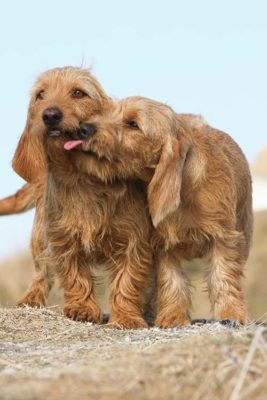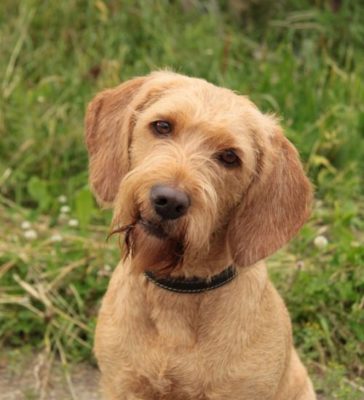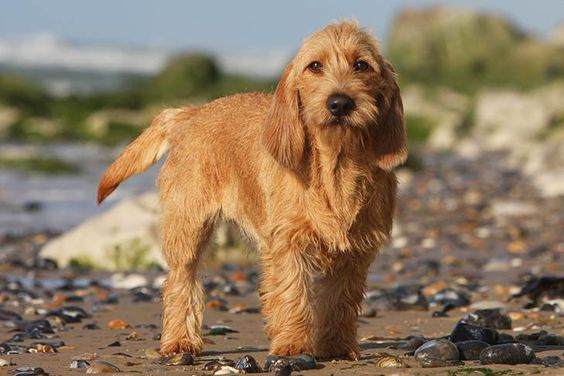Basset Fauve de Bretagne
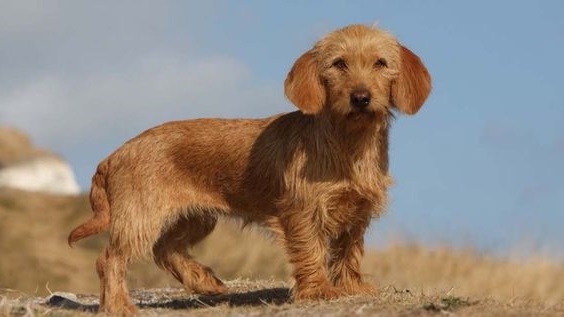
The Basset Fauve de Bretagne has a highly good-natured character. Friendly, pleasant with everyone around him, he will never hurt a human baby. Children are their favorite partners in active games; he would instead bite his tail than hurt or injure a child. He easily gets along with other dogs who are larger or similar to him.
Table of Contents
Breed Information
| Another Name | Fawn Brittany Basset |
| Origin | France |
| Height | Males 33-36 cm Females 30-33 cm |
| Weight | 16-18 kg |
| Fur | Long |
| Color | Red, wheat |
| Lifespan | 10-12 years |
| FCI Classification | Scent hounds and related breeds |
| Group | Hunting dogs |
| Price | From $400 |
Breed Photos
Origin History
The Basset Fauve de Bretagne is the younger brother of the Griffon Fauve de Bretagne. The breed was bred in 19th century France through a successful cross between the Vendée Basset Griffon and the Greater Breton Hound. Wealthy French families used the dogs for hunting deer and wild boar, but they were retrained to hunt more miniature games such as hares, foxes, and badgers over time. The breed is considered extremely rare and, a couple of decades ago, was on the verge of extinction. Dog breeders from France, Great Britain, and Belgium have bred short-legged redheads into their own hands. Their numbers are increasing every year, and other countries are increasingly choosing this breed as a pet or companion.
Appearance
The appearance of the Basset Fauve de Bretagne is very bright and recognizable. Short and slightly curved paws, low-grown elongated body. The characteristic color is even reflected in the breed’s name – it is the red color of various shades. It’s tough, dense coat makes it easy for them to follow the game through thorny bushes, dense fields, and deep ravines. The elongated abdominal hairs create a kind of “coat” for the dog. They have an average head with a long pointed muzzle and small ears planted at eye level. The average weight of all dogs is 17 kg, height up to 40 cm.
Character
The Basset Fauve de Bretagne has a highly good-natured character. Friendly, pleasant with everyone around him, he will never hurt a human baby. Children are their favorite partners in active games; he would instead bite his tail than hurt or injure a child. He easily gets along with other dogs who are larger or similar to him. Smaller pets are not happy with him; his hunting instincts will kick him down, pinch him, and put him in his place. It is a reliable family dog, loyal, strongly attached to the owner. All hounds are characterized by willfulness and stubbornness; Basset Fauve de Bretagne is no exception. Proper training will erase all the shortcomings.
Care
The Basset Fauve de Bretagne is suitable for an active family that travels frequently. Long walks in the woods, endurance running, dog sports – you should provide all this and more for this very active pet. There will be too little room for this little one in a city apartment. A country house with a large yard will feel great. Dogs are very clean, their stiff coat is capable of self-cleaning, but that does not mean that you should neglect to care for it. The long red coat of the Basset Fauve de Bretagne should be trimmed a couple of times a year. Hanging ears can accumulate dirt due to poor grooming, various infections can occur, and parasites can settle in.
Don’t let the dog get bored; it will be a big problem for everyone. Capricious and uncontrollable, he will make a mess and raise everyone’s ears around the house. Lack of exercise also affects the health and longevity of your beloved pet.
Training
The sooner you start training a Basset Fauve de Bretagne, the better for everyone. They prefer to do what they want to do. It should be dealt with, but very carefully, so as not to break the pet’s mental state. It is better to entrust the training to professionals. Do not rely too much on the successful results of training; independent thinking and the ability to make decisions independently will not go anywhere, as long as you do not engage. It’s better to exhaust your dog with long walks in the woods or active games with children, and that’s what he’ll thank you for!
Common Diseases
Basset Fauve de Bretagne boasts a sturdy immune system. A well-groomed, four-legged family friend will not upset owners with an untimely ailment, which contributes to the popularity of the Red Breton Basset as a pet. After every walk and hunt, the dog should be inspected for ticks and eye damage. The most common causes of death in Basset Fauve de Bretagne, besides traffic accidents and age, were kidney disease, heart disease, and cancer.
The following diseases are also at risk:
- ear infections;
- diseases transmitted by ticks;
- ulcerative keratitis;
- cataract;
- reproductive dysfunction.
Nutrition
Basset Fauve de Bretagne grows quickly, so it is important to make a proper diet for the babies. Up to three months of age, puppies should be fed five times a day, while adult dogs should be fed twice a day. The basis of the diet of an adult dog should be by-products and meat of lean varieties; they should be in the diet at least 40% of the diet. The following products must be included in the menu:
- boiled fish;
- porridge (rice, oatmeal, and wheat);
- fermented dairy products and milk;
- vegetables, fruits, herbs;
- eggs.
Vegetables and butter, fish oil, vitamin and mineral supplements should be added to the basic foods. If the dog eats dry dog food, additional vitamin supplements are not necessary. The dog should not overeat – the amount of food depends on the lifestyle. For example, after hunting, the dog needs calorie-rich food with high protein content. The dog must have constant access to clean water and a washed bowl for drinking.
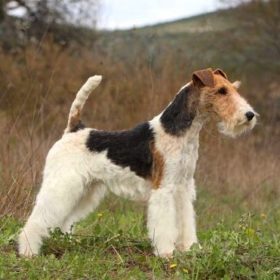 Wire Fox Terrier
Wire Fox Terrier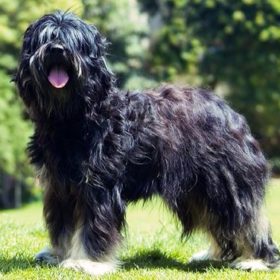 Portuguese Sheepdog
Portuguese Sheepdog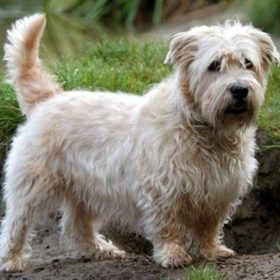 Glen of Imaal Terrier
Glen of Imaal Terrier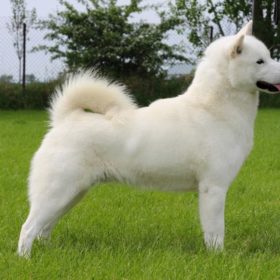 Kishu
Kishu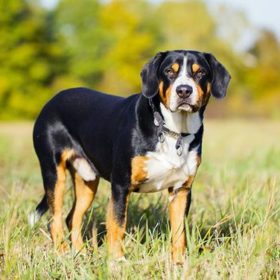 Entlebucher Mountain Dog
Entlebucher Mountain Dog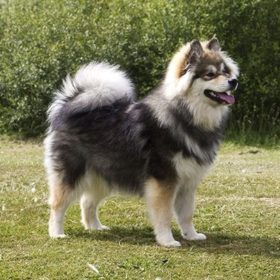 Finnish Lapphund
Finnish Lapphund